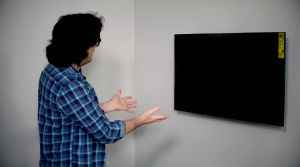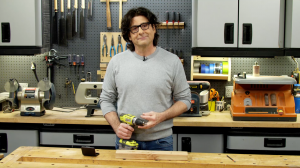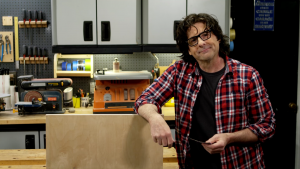Advantages of Japanese Pull Saws
Unusual-Looking Handsaw Slices Through Wood Like a Hot Knife Through Butter
The Japanese saws demonstrated in this video are the Dozuki Saw and the Ryoba Saw both available from The Japan Woodworker. Note: some of these saws are professional grade and can be rather pricey. If you check out this site, scroll down the page to view some of the less expensive models nearer the bottom.
Japanese handsaws have been an important part of my tool collection for a long time.
The Dozuki Saw - This is the Japanese saw I use most often. It has a rigid metal spline on the back to keep the blade from buckling. The Dozuki also features very fine teeth, ideal for smooth cuts across the grain.
The handles on Japanese saws are straight and wrapped with rattan for a secure grip. Probably the most unique feature of these saws is that they cut as you pull them toward you. So little pressure is required that it's possible to grip the saw with your fingers only and still cut.
The cutting technique is a bit different with Japanese saws too. With this dovetail or tenon saw, I begin my cut on the closest edge of the board, then as I saw, tip the blade into a more horizontal position as I work my way to the opposite edge. When the blade I'm using becomes dull, I simply detach it from the handle and replace it with a new one.
The Ryoba Saw - This saw is the mainstay of the Japanese woodworker. It has crosscut teeth on one side and rip teeth on the other. Because it has no back, it's well suited for cutting through thicker lumber. When ripping with this saw, I start on the edge furthest from me and cut with the blade in a nearly horizontal position. Cutting on the full stroke like this allows me to easily see where I'm going and gives me more control and accuracy than I can get with a conventional, push-type saw. A nice feature of this model is that I can tilt the blade and often get into awkward or tight spots that would otherwise be impossible to reach.
Blog Articles
Expert Tips: How to Mount a TV on the Wall
Get step-by-step instructions on how to mount a TV on the wall, especially for big screen TVs. Master the art of wall mounting with our tips.
Frustrated by Stripped Screws? Here’s How to Get Them Out Fast
We've all been there. You're in the middle of a project, and suddenly your screwdriver spins uselessly in the screw head. The screw is stripped, and frustration sets in. With a little know-how and this simple trick, you can tackle a stripped screw and get your project back on track.
The Secret to Finishing Plywood Edges
Plywood projects are fantastic, but exposed edges can be an eyesore. This blog post unveils the magic of edge banding - a simple technique to create flawless, finished edges on your plywood projects, making them look professional and ready for paint or stain. Watch the video to learn how to apply edge banding like a pro!





